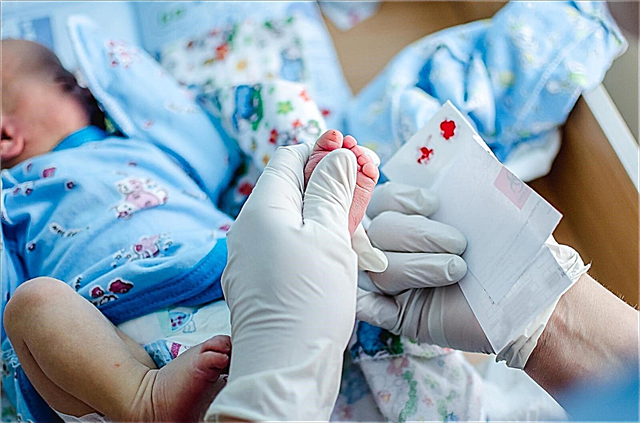With the birth of a child, every mother strives to surround him with her love and care. Undoubtedly, with the advent of the baby, the usual life of the family changes greatly. And after discharge, when happy parents are left alone with the baby, they start to have many different questions. This is especially the case with parents who had their first child.
Most often, young parents are interested in when they can start walking with their newborn. The first walk with a newborn is an exciting event, and inexperienced parents often get lost, not knowing when to start going out, how long to walk with the newborn and how to dress the baby. How the newborn's first walk will take place depends on the weather conditions and the season. Let's look at how to properly walk with a newborn in winter.
Features of the infant organism
In order to remember the rules for walking with a newborn in winter, you need to know some features of the child's body.
- The mechanisms that regulate body temperature are poorly developed in a newborn, so there is a risk of hypothermia or overheating.
- Metabolism in a newborn is accompanied by the release of a significant amount of heat. And the baby needs to get rid of it somehow. He can do this in two ways: either through the skin (sweating), or through the lungs (during breathing). The child's sweat glands are not yet well developed, so his body has adapted to lose heat during breathing. To do this, it is necessary that the temperature of the air he breathes be significantly lower than the temperature of his body. The optimum temperature is 18-19 degrees.
- If you touch the baby's skin, it is elastic and velvety. The skin consists of a thin layer of horny cells, its thickness is five times less than the skin of an adult, so the skin is easily injured. Because of this, babies freeze or overheat much faster.
How much clothes does a baby need?
First, let's figure out how to dress a newborn at home.
 At home, while he is young, wear the same number of layers of clothing as you wear yourself. When it grows up and becomes more mobile, one layer less. All babies are unique and they are all very different in character. Nimble and active babies are constantly on the move, they sweat quickly, and they need less clothing. Quieter kids, on the contrary, may freeze when it seems to you that they are comfortable enough at home.
At home, while he is young, wear the same number of layers of clothing as you wear yourself. When it grows up and becomes more mobile, one layer less. All babies are unique and they are all very different in character. Nimble and active babies are constantly on the move, they sweat quickly, and they need less clothing. Quieter kids, on the contrary, may freeze when it seems to you that they are comfortable enough at home.
You already know that babies lose heat easily and start sweating just as quickly. The instant solution to this problem is in your hands. By communicating with your child as often as possible, you can already feel by touch that he is hot.
How to tell if your baby is cold or hot?
- The frozen baby is actively waving his arms and legs, instinctively trying to warm them up.
- The baby's skin is pale, the feet and fingers are cold to the touch. In this case, cover your baby with a blanket or a warm diaper.
- An overheated baby, on the other hand, has reddened skin, and sweat may appear in some places.
Strip your little one and play while he takes a healthy air bath.
How to dress outside?
When going for a walk with your baby, dress it according to the plus one rule. That is, you put on the child the same amount of clothes as on yourself, and add another layer. For example, mom put on a T-shirt and jumper, jeans and a coat on top. The child should wear a cotton bodysuit and slides, a thin overalls, a warm overalls (velor) and a winter envelope on top.
 Put on a thin natural fabric (cotton, linen) hat on your head, and a warm hat on top that tightly covers your ears.
Put on a thin natural fabric (cotton, linen) hat on your head, and a warm hat on top that tightly covers your ears.
Be sure to put gloves on the handles of your baby. When the wind is outside, cover the baby with a blanket or blanket.
Always take an extra set of clothing with you (the one that is close to the body) so that you can change your baby if necessary.
As your toddler gets older and more active, the plus-one rule will no longer work. Moving children do not freeze like newborns, and too warmly dressed sweat quickly.
When can you walk with a newborn?
- In winter, it is allowed to go out for a walk, starting from the 14th day of the child's life or two weeks after birth. Previously, you can go for a walk when the temperature outside the window is above freezing.
- Walking with a child is recommended when the temperature drops at least minus 15 degrees Celsius.
- It is better to go out for a walk with the baby between feedings, about half an hour after eating. A well-fed baby will be calmer, moreover, after eating, the body always warms up.
- It is better to walk with your child in the winter in the morning, when it is still light outside. In the evening, as a rule, the temperature drops and it becomes much cooler.

When should you not walk with a newborn in winter?
- On the first day after discharge. Give your child time to get used to the new conditions in his life.
- When the temperature outside the window drops below 15 degrees. The risk of hypothermia increases.
- In severe frost and harsh, cold wind. Going outside at such a time, you risk freezing your baby's cheeks and nose.
- If your child is sick or has a fever. During illness, children sweat a lot and more often, so there is a danger of hypothermia. This can worsen the condition of an already ill child. You can resume walking as soon as your baby is well.

How long to walk with a newborn in winter?
- You should start walking with your child in good weather and a temperature of at least 5 degrees below zero from 15 minutes. This is quite enough time for the first walk and the baby's acquaintance with the world that surrounds him.
- When the air temperature is minus 15 degrees, the first walk is no more than 10 minutes in time.
- Increase your walking time by 10 minutes daily. Do not strive to immediately increase walks for a longer time, let the baby's body adapt and get used to temperature changes.
- In terms of duration, a walk in winter should not take more than 1.5 hours. Neither you nor your baby can overcool, so an hour and a half walk is the best option. You can walk a little longer in freezing temperatures if you are sure that the child and you yourself will not freeze.
General rules for a winter walk
- Before going for a walk, see what is happening outside (is there a wind, storm or blizzard, what is the air temperature).
- Dress yourself first, then start dressing the child. This is done to prevent the child from sweating. A child who is sweating can freeze on the street and get sick.
- It is better to take clothes that come into contact with baby's skin from natural fabrics. It can be cotton or linen. Give preference to light colors, they have less dyes. Choose clothing with seams on the outside to avoid chafing and skin irritation.
- Choose undershirts that cover the handles, or buy scratches separately. Baby's handles freeze quickly, so they must be securely closed. Do not forget to wear warm woolen mittens over the scratches.
- Wear more spacious clothes, they do not restrict the child and are better warmer than clothes that are close-fitting.
- If it is below 10 degrees outside, be sure to cover the baby's face with a diaper. Put on woolen socks on the legs at this temperature.
- Take a pacifier with you for a walk. You should always have it at your fingertips so that when the child cries, give it to him. This prevents the cold winter air from entering the child's respiratory tract. When the baby breathes through the nose, the air is warmed up.
- If you plan to go for a walk during the winter while your baby sleeps in the stroller, provide a warm nest for him.

What is the difference between walking with premature babies?
- If the baby was born weighing less than 3 kilograms, but full-term, they are allowed to go outside with him only if it is not colder outside minus 5 degrees.
- It is allowed to walk with premature babies only if the temperature outside is above zero.
 This is due to the fact that in such babies the regulation of body temperature is much less developed than in full-term babies. The lower the weight of the crumbs, the higher the risk of freezing. To avoid hypothermia, give your baby time to get stronger. Do not go outside for the first three weeks after you are discharged. When your baby is stronger, you can start walking by following the recommendations given for term babies.
This is due to the fact that in such babies the regulation of body temperature is much less developed than in full-term babies. The lower the weight of the crumbs, the higher the risk of freezing. To avoid hypothermia, give your baby time to get stronger. Do not go outside for the first three weeks after you are discharged. When your baby is stronger, you can start walking by following the recommendations given for term babies.
It is imperative to walk with your baby in winter, as in any other season of the year. Fresh winter air is important for the full development of the baby. Walking together hardens, cheers up and helps mom quickly regain shape. In addition, walking with a sleeping baby, a mother gets the opportunity to take a break from everyday worries and enjoy the fabulous beauty of winter nature.
Article rating:



